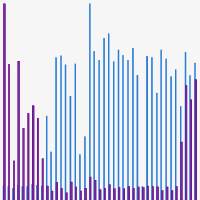The oligo design tool takes as input two sequences that correspond to the two alleles to be screened (e.g., wild-type/unedited and SNP/edited versions of the genomic target sequence), with each including at least 35 bases on either side of the modification site (i.e., the site at which a researcher is seeking to engineer a single-nucleotide substitution using genome editing technology). The first nucleotide sequence input typically corresponds to the native or wild-type version of the genomic target sequence (i.e., the sequence before editing), while the second nucleotide sequence is identical to the first sequence, except that it includes a single-nucleotide substitution (i.e., the sequence after editing). Once the sequences have been input successfully, clicking the [Submit] button will initiate the oligo design process. The [Reset] button can be used to clear the inputs if needed. An example of this input is shown below:

Please note that the following conditions must be satisfied in order to use the tool successfully:
- Edited input sequences must include exactly one SNP.
- Both wild-type and edited input sequences must be the same length (e.g., if one is 512 bases, the other is also 512).
- Input sequence lengths cannot exceed 1,000 bases.
- Input sequences should consist of at least 35 bases on either side of the SNP site. For optimal probe design, we recommend including ≥50 bases on either side.
NOTE: Please be careful to avoid the inclusion of extra spaces when inputting sequences, as these will be interpreted as part of the input and will likely return an error message.
To design oligos to detect multiple substitutions in parallel, please refer to the "Detecting multiple edits" section.










